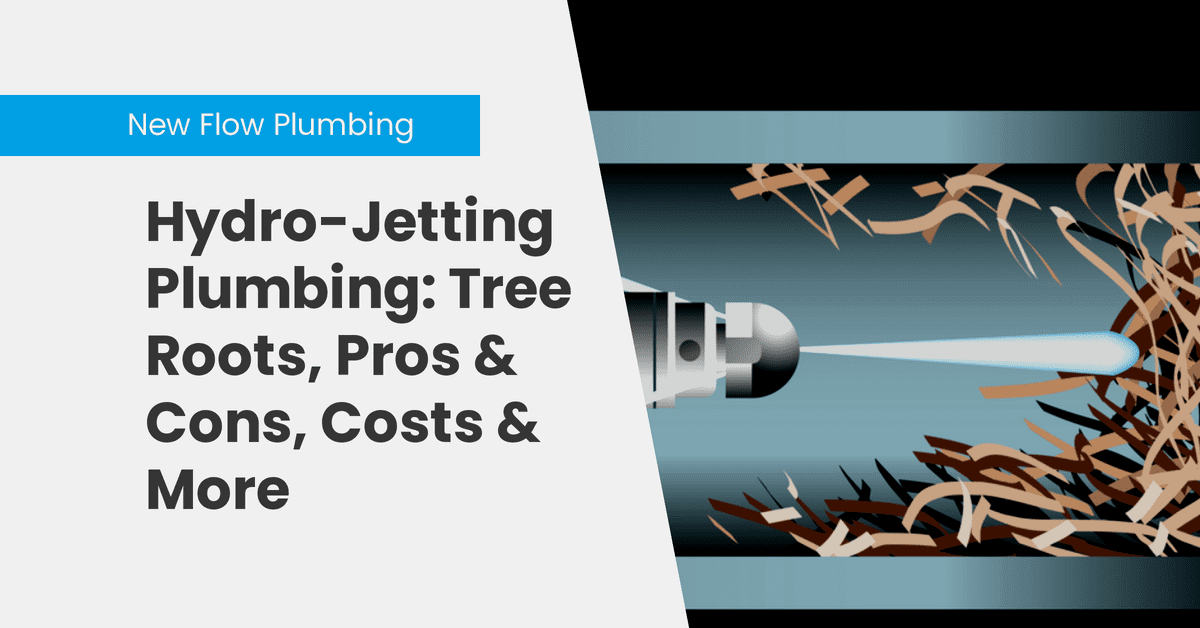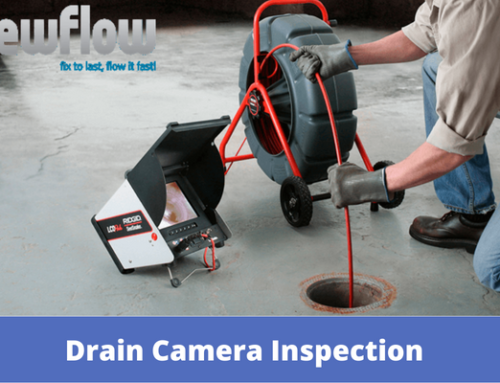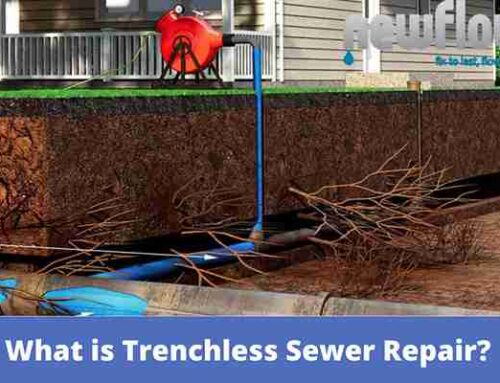Hydro Jetting Plumbing Guide: Pros & Cons, Costs
Plumbing problems caused by stubborn clogs or invading tree roots can be overwhelming for any homeowner. Traditional methods like snaking or chemical cleaners often provide only temporary relief, leaving the issue to return again. One of the most effective solutions is hydro jetting, which uses a powerful stream of pressurized water to break apart debris and flush away blockages deep inside your pipes. Among different plumbing methods, hydro jetting is our favorite because it not only clears the current clog but also helps prevent future buildup by thoroughly cleaning the pipe walls. If you’ve been struggling with slow drains, frequent backups, or tree root issues, this guide will help you understand the pros, cons, and costs of this . Keep reading to discover how it works, when to consider it, and how it can restore your plumbing system to top condition.
What Is Hydro Jetting Plumbing?
It is a plumbing method that uses high-pressure water streams to clear blockages, clean pipe walls, and remove stubborn buildup. A specialized hose is inserted into the drain or sewer line, and water is blasted out at pressures that can reach up to 4,000 PSI. This force can cut through grease, sludge, hair, and even tree roots that have made their way into the line.
Unlike traditional snaking, which only punches a hole through the clog, hydro jetting scrubs the inside of the pipe clean. The result is a plumbing system that not only flows freely but is less likely to clog again in the near future. This makes it a preferred method for both homeowners and plumbers when dealing with recurring or severe blockages.

How Hydro Jetting Works Step by Step
Understanding the process helps homeowners see why it is so effective:
- Initial Inspection – A plumber typically performs a camera inspection of the pipes. This step ensures there are no weak spots or damaged areas that could be harmed by high-pressure water.
- Hose Insertion – A flexible hose with a special nozzle is fed into the drain line.
- Water Pressure Activation – The hydro jetting machine pushes water through the nozzle at very high pressure. The water streams move both forward and backward to clear debris.
- Full Cleaning – Grease, mineral deposits, and roots are blasted away, leaving the pipes clean and smooth.
- Final Check – Another camera inspection may follow to confirm that the blockage has been fully removed.
This method doesn’t rely on harsh chemicals, making it safer for your plumbing system and more environmentally friendly.
Why Homeowners Choose Hydro Jetting
Hydro jetting has become popular because it solves more than just the surface problem. Here’s why it stands out:
- Thorough Cleaning – Instead of just breaking up a clog, hydro jetting removes all the buildup inside the pipes.
- Handles Tree Roots – Few methods can handle tree root intrusion as effectively as hydro jetting.
- Long-Lasting Results – By removing residue, the chances of another clog forming soon after are reduced.
- Eco-Friendly – It uses only water, no chemicals, making it safer for the environment.
- Versatile – It works on both residential and commercial plumbing systems.
Pros of Hydro Jetting Plumbing
Every method has advantages, and hydro jetting offers plenty of them:
- Powerful and Effective – Few tools match the cleaning power of water at thousands of PSI.
- Prevents Future Problems – Clean pipe walls mean fewer chances for grease, soap, and hair to stick.
- Good for Tree Root Removal – Water pressure can cut through and flush away small to medium roots.
- Safe for Most Pipes – When pipes are inspected beforehand, the process is safe for common plumbing materials.
- Saves Money Over Time – Fewer repeat clogs and service calls mean less long-term expense.
Cons of Hydro Jetting Plumbing
While highly effective, it isn’t perfect for every situation. Some drawbacks include:
- Cost – This is more expensive than basic snaking or chemical treatments.
- Pipe Condition Matters – If pipes are old, cracked, or fragile, the pressure may cause damage.
- Professional Service Required – This is not a DIY project. Specialized equipment and training are needed.
- Temporary for Severe Root Growth – If roots are large and have already damaged the pipe, this may not be a permanent fix.
Costs of Hydro Jetting Plumbing
The price of this varies based on several factors, but most homeowners can expect to spend $350 to $600 on average. Costs may go higher if:
- The clog is far from the main access point.
- The sewer line is larger or requires extensive cleaning.
- Multiple tree root intrusions are present.
Although the upfront cost is higher than snaking, hydro jetting’s thorough cleaning often prevents future service calls, resulting in long-term savings.
When Hydro Jetting Is the Best Choice
Hydro jetting is particularly useful in situations like:
- Recurring drain clogs that return soon after snaking.
- Slow drains in multiple areas of the home indicate a more significant blockage.
- Tree roots were detected during a camera inspection.
- Commercial settings where grease and waste build up quickly.
If your plumbing has chronic problems, it can be a long-term solution rather than a quick fix.
Hydro Jetting vs. Snaking
Many homeowners wonder whether it is better than snaking. Here’s a breakdown:
- Snaking – Affordable, simple, works for minor clogs. It doesn’t clean pipe walls, and clogs may return soon.
- Hydro Jetting – More costly but highly effective. It removes buildup completely and lasts longer.
For serious or recurring blockages, this usually offers better long-term results.
Safety Considerations
It is powerful, and that’s why inspections are crucial before starting. A professional plumber uses a camera to make sure pipes can handle the pressure. If the pipes are too old or cracked, repair or replacement may be recommended first.
By working with trained professionals, homeowners can ensure the process is done safely without damaging their plumbing system.
Long-Term Benefits of Hydro Jetting
Homeowners who invest in hydro jetting often find that:
- Their plumbing system runs more smoothly.
- Emergency clogs are less likely to happen.
- Tree roots are kept under control.
- Fewer harmful chemicals are needed for maintenance.
The long-term payoff makes this a valuable investment in your home’s plumbing health
Conclusion
Hydro jetting is one of the most effective plumbing methods available today. It not only removes stubborn clogs and tree roots but also cleans pipes so thoroughly that future issues are less likely. While the upfront cost is higher than other methods, the long-term benefits in terms of fewer clogs, better flow, and peace of mind make it a smart investment.
If you’ve been struggling with plumbing problems that just won’t go away, hydro jetting may be the solution that finally gives you lasting results. By understanding its pros, cons, and costs, you can make an informed decision about whether this method is right for your home.
FAQs

Arman Grigoryan
Founder & President of New Flow Plumbing
Arman Grigoryan is the founder and president of New Flow Plumbing, proudly serving Los Angeles, Sacramento, and surrounding areas. With extensive experience in plumbing diagnostics, he leads a skilled team specializing in advanced sewer and drain camera inspections to quickly identify problems and deliver lasting solutions. Arman is dedicated to using the latest technology to provide reliable service, honest answers, and dependable results for every customer.







